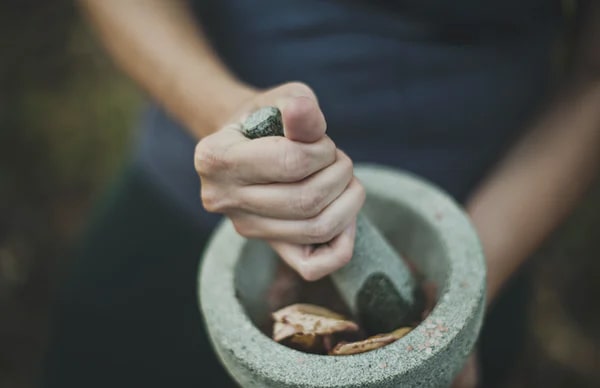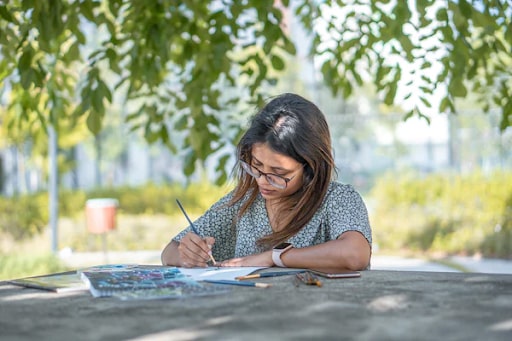
Guide to Alternative PTSD Treatment Options
What is PTSD and Why Does it Occur?
Post-traumatic stress disorder is a name given to complex symptoms experienced because of a traumatizing event. Our body mobilizes various survival mechanisms such as the autonomic nervous system’s fight-or-flight response, repression, dissociation, self-harm, memory loss, and building up walls to help us cope with difficult life events. Each one of us has a different threshold for which events can cause us trauma, bringing our body into a survival mode. As a result of these survival mechanisms, many non-essential functions are turned down or even completely shut off so that we can continue living. Unfortunately, as a result, we are likely to develop symptoms associated with downregulated body function including lethargy, insomnia, depression, anxiety, numbness among many others. Additional symptoms such as panic attacks, grief, crying, and emotional outpouring are the body’s way of releasing all the pent-up energy stored in the body due to the trauma.
Trauma symptoms are meant to be a short-term solution for a negative event that has occurred in our life. These trauma symptoms are a coping mechanism to preserve ourselves. However, if not dealt with in a timely manner, they can create many problems to the suffering person in the long run. This is why it is very important to deal with our trauma before it becomes debilitating in the long-run. Since we are all unique, each person will be ready to start the healing process at a different time, since our bodies know what an ideal healing circumstance looks like. Creating a safe space for healing to occur is an essential step in the journey to PTSD recovery.
Alternative Treatments for PTSD
Unfortunately, today’s conventional treatment for PTSD comes up short in helping people cope with and treat complex symptoms. Often, it involves pharmaceuticals, which may provide temporary relief but are not a viable long-term solution, given that they don’t address the source of the trauma. Furthermore, these drugs can have detrimental side-effects. Luckily, there are alternative treatments for PTSD that can not only help us get ready to face the underlying reasons for our trauma, but also prepare our body, mind, and spirit for the healing journey. Here are some of our top suggestions on how anyone can start healing from complex PTSD symptoms.
Herbalism
Plants have been used for thousands of years by humans to soothe and heal themselves. In many villages, there was a designated herbalist that took care of everyone who developed any kind of ailment. A lot of our knowledge about healing with herbs comes from observing animals who gravitate toward and eat certain plants when suffering from an illness. Some have experimented and found what herbs work by trial and error, while others got their herbal recommendations in dreams or shamanic journeys.

One of those important herbs used for thousands of years to soothe and heal the nervous system is the cannabis plant. CBD oil, a cannabis plant extract, has been very successful in relieving symptoms of PTSD without the side-effects and cost of pharmaceuticals.
Because PTSD symptoms develop from a shocked nervous system, the autonomic nervous system is employed to help in those moments of stress, but it never goes back to its baseline. As a result, herbs that specifically target the nervous system have been the most effective in relieving complex PTSD symptoms. Some nervous system herbs are tonics (invigorating and restorative), some are calming, and some adaptogenic (nourishing and sustaining) and all support the nervous system in different ways. These plants can be taken fresh or dried, in tincture form, as a tea, in food as a powder, or as capsules. It is a good idea to consult a knowledgeable herbalist to get your own unique herbal protocol that includes different herbal formulas that work on the whole body. Some of the best nervous system herbs are stinging nettle, ashwagandha, lavender, linden, chamomile, rosemary, marshmallow, thyme, tulsi, oat straw, schizandra berry, astragalus, and rhodiola.
Another way to use herbs for healing is to incorporate essential oils and flower essences into your daily routine. Essential oils are potent plant extracts – just a drop diluted in some carrier oil (olive oil, coconut oil, avocado oil, jojoba oil…) massaged into the wrists, temples, and any other tense area of the body can help enormously. Using essential oils as aromatherapy (smelling them from the bottle or diffusing them in the air) is an additional excellent option, as the compounds positively impact the brain much more quickly.

Flower essences, the energetic imprints of flowers, are another great herbal tool for PTSD recovery. Some of the best-known flower healers are the golden yarrow and the star of Bethlehem, but you can also find a flower that resonates with you and which is more likely to aid you on your healing journey. These flower essences work on an energetic level to help you embody their qualities of strength, resilience, and calmness.
Change in Diet
Today’s modern diet has been instrumental in the current disease epidemics – new cheap GMO foods have been introduced without insight of their long term-effects and pesticides are everywhere in the air, on our food, and in water. No wonder we have to dig deeper and find alternative ways to eat to increase our nutrition, vitality, and health. If our organs aren’t working properly, our bodies will feel fatigued and weak, with very little ability to deal with the stressful external environment. You can start by introducing some nervous system-friendly foods such as seaweed, cilantro, bitter greens, root vegetables, and berries and eliminating trigger foods such as fried, preservative-laden and GMO foods. If you need more guidance on how to switch to a healthier diet, you can consult a naturopath who is very knowledgeable about which food to eat to heal the body properly.
Talk Therapy
Externalizing our thoughts and feelings is crucial for a successful recovery. Sharing what we did or what has happened to us gives us an opportunity to be seen, heard, and understood – to feel like we are not alone with our story. A caring coach, counselor, or therapist is important in this respect, so that we feel safe talking about and potentially reexperiencing our trauma.
Cognitive-behavioral therapy has been successfully utilized in veteran support and for individuals experiencing PTSD symptoms by uncovering thoughts, feelings, and behaviors that keep them in a suffering state and guiding them to bring normalcy into their lives. Mindfulness-based therapy is a unique approach in which a counselor works with a person to observe the traumatic event and to make peace with what happened by accepting it without judgment.
Another form of telling our story so that we can heal is narrative exposure therapy where patients can “rewrite” their negative narrative about traumatic events and take their power back. This can also be done through journaling or sharing the written story with others. It is sometimes difficult to feel safe enough to tell our story. Group therapy can be the most powerful way for us to build trust with others and be inspired to tell our story through the courage of others sharing their own thoughts and feelings.
If we need some guidance on how to improve our day-to-day lifestyle choices, a life coach who can hold us accountable for the changes we want to make could be a great investment in our health and recovery.
Mind-Body Integration through Body Movement
Traumatic events are often remembered by our bodies. The stress and tension of the situation can become stuck in different parts of the body, causing tissue damage and blocking of energy flow that keeps our tissues, organs, and the nervous system healthy.

Depending on our personality and temperament, different physical activities such as group sports, dancing, running, hiking, walking, swimming, martial arts, yoga, tai chi, chi gong, climbing, and many other body movement techniques can free some of the stagnant energy by helping us feel more grounded, stable, present, and energized. In addition, we bring in more oxygen into our body, providing more nutrition to our cells and improving our physical as well as emotional, mental, and spiritual health.
Another effective technique for releasing stress from the body is the tension and trauma releasing exercises which initiate neurogenic shaking in the psoas muscles. Our psoas muscles hold a lot of pent up energy and, through shaking (children and animals shake freely when confronted with a traumatic event), we can allow ourselves to release emotions that no longer serve us.
Energy Work
The movement of energy through our bodies can also be achieved through intention. In the energy healing practice Reiki, the practitioner directs prana, or universal vital energy, to flow through the body and nourish the parts that need it. In different Eastern philosophies, the body has specific energetic vortexes called chakras or meridians, which need to be in balance (energy flowing freely through them) for optimal health.
Acupuncture utilizes metal needles to unblock and distribute energy throughout the body. Specific breathing exercises or breathwork can also be used to bring more oxygen into the body and to release any energy blockages. Sound healing is a particularly fascinating technique, because it uses specific tone vibrations to achieve balancing of the energetic vortexes. For instance, vibrations from tuning forks, crystal bowls, and our own voice can stimulate and heal a particular area of the body. Body movement techniques such as tai chi, qigong, and hatha yoga also work to invigorate our tissues and dislodge any energetic blocks. Body massage can likewise work wonders to relieve tension and stress stored in the body.
Meditation
Meditation helps us gain control over our nervous system and how we respond to traumatic situations. It also has the power to change our negative mindset about our trauma. For example, Vipassana meditation, rediscovered and taught by Gotama Buddha, seeks to focus attention on unpleasant bodily sensations through body scanning until these sensations cease to bother us. This meditation shows us that nothing is permanent in this world, not even pain or suffering, and that we have control over how we feel. Transcendental meditation is another technique that involves a silently spoken mantra, a short phrase having a special meaning to us, to bring our nervous system into a state of deep relaxation.

If sitting in a lotus position is not your thing, walking meditation, especially in nature, can be a very effective way to focus your attention on something that soothes the nervous system. Meditating can also mean doing something that we love, a task that focuses us so profoundly, that we enter a state of flow and become present in each moment.
A form of yoga called Yoga Nidra has been particularly effective in slowing down brain activity, bringing practitioners into a deep meditative state in which they are more susceptible to healing. In this meditative state, our subconscious mind, which might be harboring negative thoughts and sabotaging beliefs, can be “reprogrammed” (especially when combined with sound healing) for a more positive life outlook.
Nature
Before we started building large cities, people lived, survived, and thrived in nature. We had to be in tune with everything around us – plants, animals, rocks, the weather. In modern times, we often neglect the importance of our connection to nature for our health and well-being. One simple way to enjoy the benefits of nature is earthing, or walking barefoot on grass or earth. This helps us ground and neutralize accumulated positive frequency charge brought on by our stressful lifestyles, since the earth itself is negatively charged. A similar effect is in action when we are near natural bodies of water such as waterfalls, the sea, and the ocean, as the air around them is also negatively charged. Pink Himalayan salt lamps are also a great source of negative ions and emit a beautiful warm light.
Starting a garden or volunteering at a community garden is another wonderful way to connect with plants and the earth to ground us and help us regulate the nervous system. For many of us, seeing plants grow from seed, taking care of them, and using them as a food source helps us create a powerful connection with the natural world.
Being in nature – the woods, mountains, parks – can be an incredibly calming, meditative, and grounding experience for us. Taking time to go walking, camping, gardening, hiking, or biking in nature can shift our mood into a higher vibration and can improve many of our PTSD symptoms.
Seeing animals in nature and having furry friends is extremely beneficial to our well-being. Sometimes, it is easier to connect to our animal friends than to other people, because animals are inherently unconditionally loving without prejudice and judgement. This love and support can be essential on our road to recovery.
Creative Expression

Many of us neglect to express ourselves creatively because our schools, jobs, and society fail to prioritize creative expression as a way of healthy and sustainable living. In fact, expressive therapy is a powerful healing technique and has been successfully used to treat many symptoms of PTSD. However, we don’t necessarily need to go to an expressive therapist to help us with anxiety, depression, and grief. Finding a creative outlet such as painting, sculpting, singing, writing, dancing, and theatre-making can help us externalize our emotions, so that we can start to deal with our story, empowering ourselves to reshape our trauma narrative. Studies have shown that even witnessing creative expression when we go to a music concert, an art exhibit, or a theatre performance can bring up our mood and increase feel-good chemicals such as endorphins and dopamine.
Hypnotherapy
Hypnotherapy is another way to tap into our subconscious mind, where a lot of our repressed emotions and unconscious beliefs lie. A hypnotherapist can guide us into a deep state of relaxation, where we feel safe and free to let go and can help train our mind and body to work for our own benefit. Another very successful PTSD therapy is a form of deep hypnosis called past life regression. This kind of hypnosis goes deeper into our past life memories, where some trauma still lies waiting to be released from our subconscious. This past life trauma could be a source of unexplainable triggers in this lifetime, preventing us from healing successfully.
Community

Connecting with others is by far the most important state of being for humans. Engaging with a community is important in regulating our mood, giving love and support, and inspiring each other to be the best versions of ourselves. For these reasons, having a sense of community is essential for us to feel seen, heard, and supported as we struggle with PTSD. Building or joining a community revolving around our interests and values is a great start! For instance, if we love music and the yogic tradition, we can join a kirtan, or we can go to potlucks, movie screenings, prayer circles, crafting events, support group events; we can also become members of a sports team, choir, or a book club. Isolation and loneliness are epidemics in the Western world, and making sure that we are supported by a community of our choice may be one of the most important steps we take toward our recovery.
How Do Natural and Holistic PTSD Treatment Options Support Veterans?
Unlike conventional treatments, PTSD natural treatment approaches have a low risk of side-effects and many have been tried-and-true healing methods for thousands of years. Additionally, a number of these natural therapies work immediately to alleviate PTSD symptoms such as anxiety, grief, depression, and sadness. They have also been shown to have positive long-term outcomes, especially if a few complementary holistic methods are combined. Likewise, because many of the natural approaches are free or very cost-effective in the long run, they are accessible to all types of individuals, unlike conventional methods.
Are you ready to find ways to overcome your anxiety, grief, or trauma? Reach out to one of our culturally-sensitive trained coaches and counselors who you can relate to, and who can recommend effective, alternative solutions for your specific needs!
